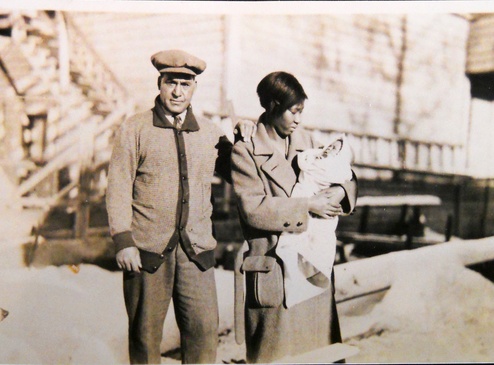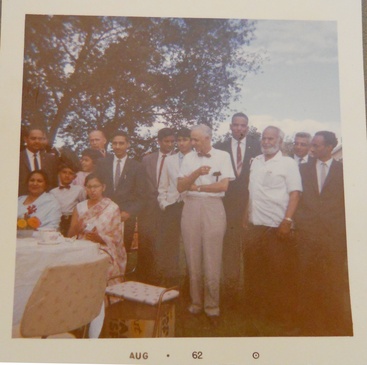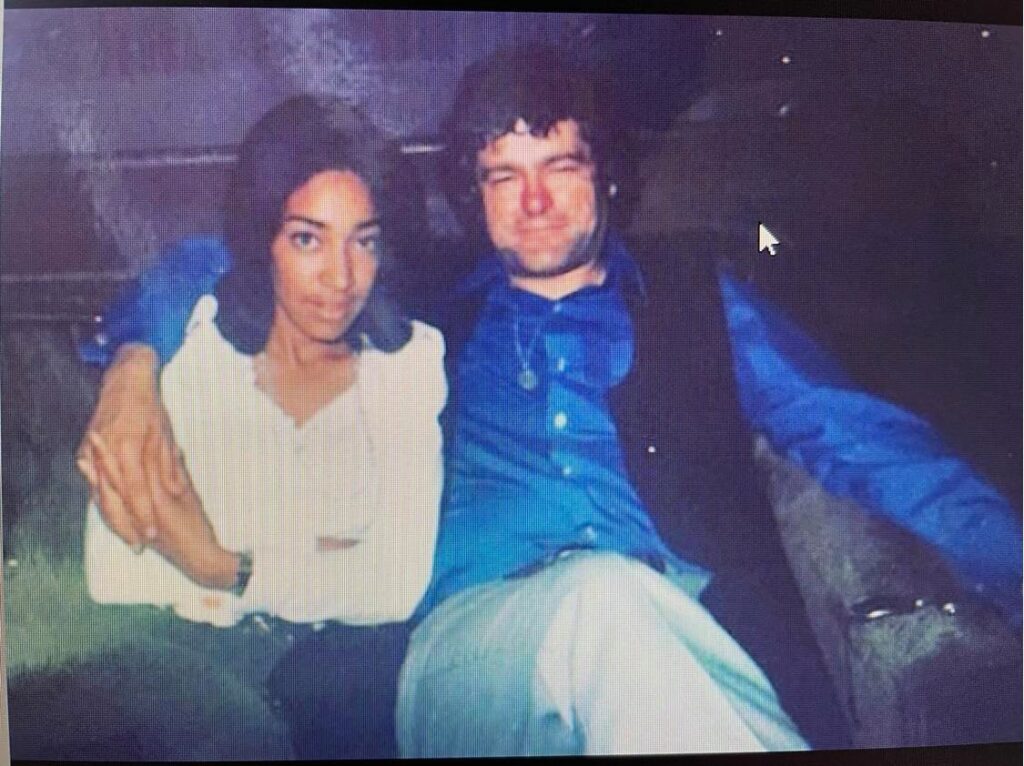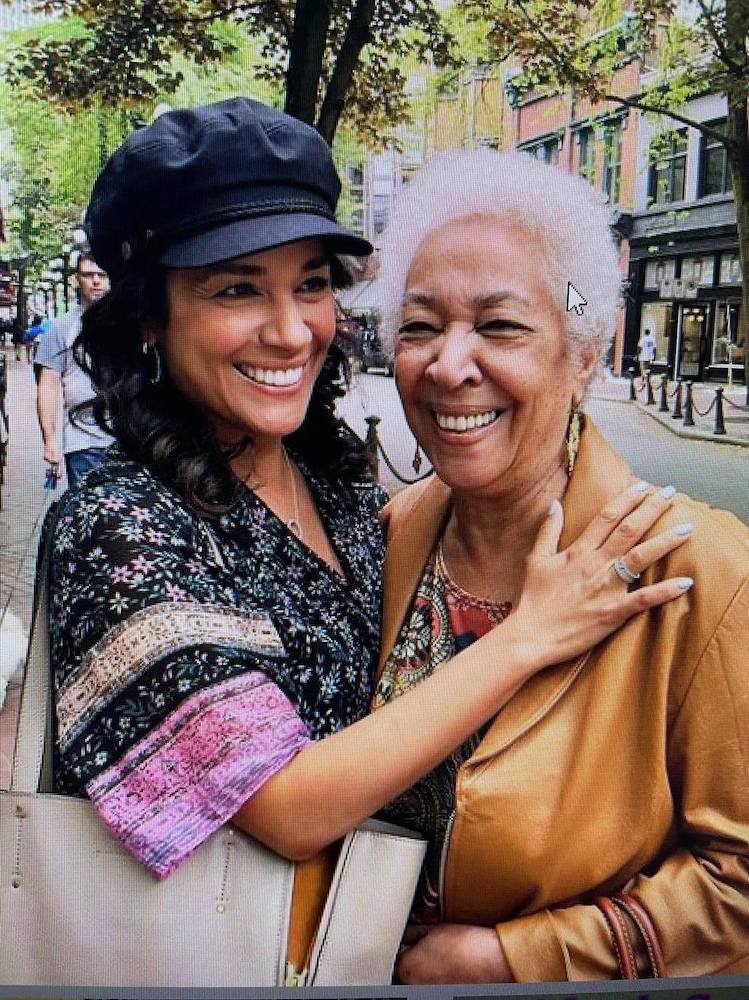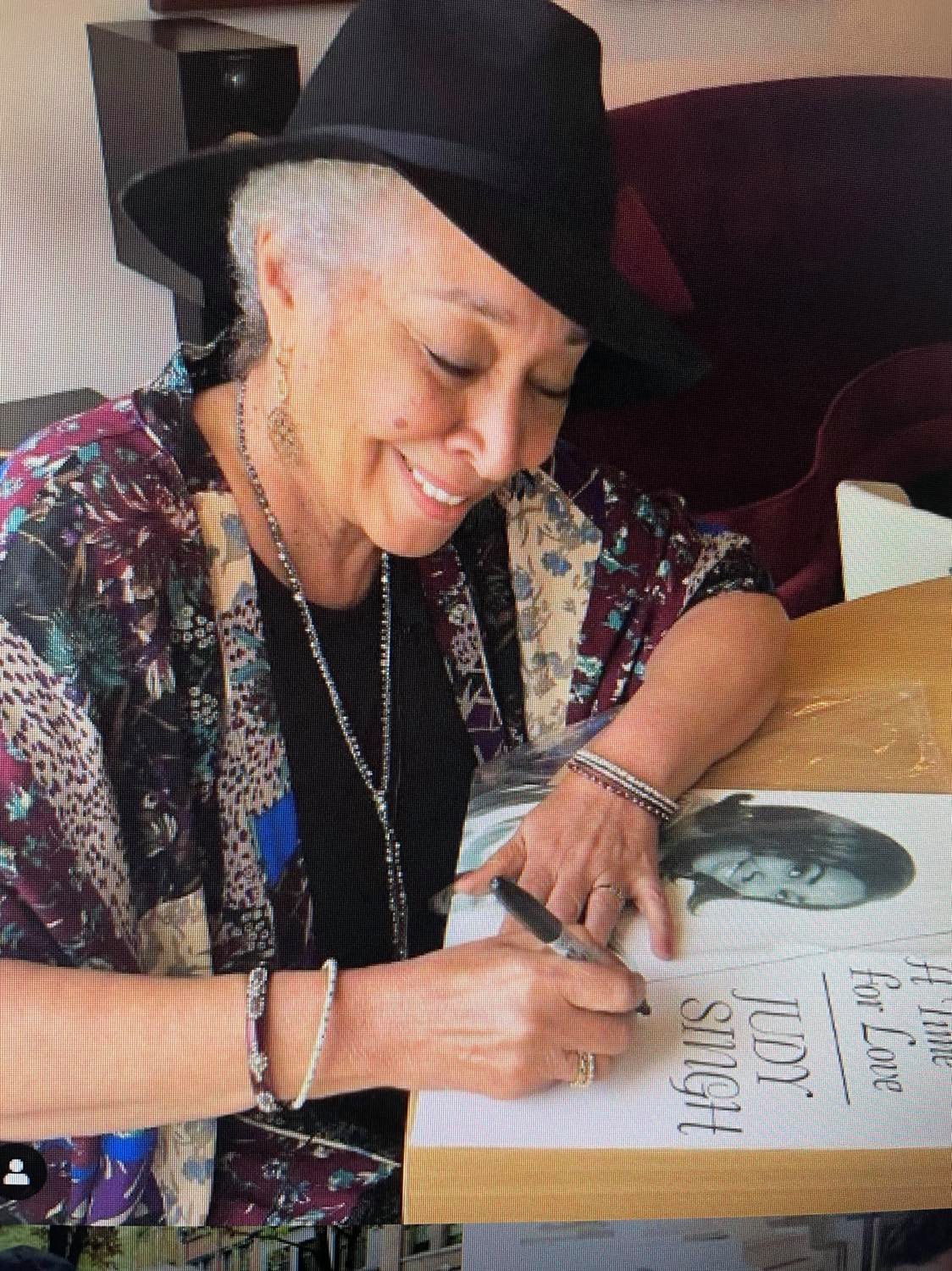Last year, while exploring South Asian music history in Edmonton, I randomly searched “Singh + artist + 70s Edmonton” and was sweetly surprised to find Judi Singh’s profile on Google and YouTube. What attracted me was her last name and her being Black. My unconscious bias had led me to think for a few seconds that she would look like me – a brown South Asian woman. Her beautiful, calming, jazzy voice comforted my lonely pandemic evenings. I started digging into who she was and did not find much information except a photo of her on the Provincial Archives of Alberta Facebook page. With the help of Dr. Michael Hawley from Mount Royal University who runs the Alberta Sikh History project, I was able to connect with Judi’s daughter, Emily Hughes, who is a filmmaker based in Calgary and graciously provided the photos in this article.
So, who was Judi Singh? Why did she have a Sikh last name and looked Black? What was life for her as a Black & South Asian musician in 1950s – 70s Edmonton?
Judi’s parents, Effie Jones & Sohan Singh Bhullar, holding her sister Helen, 1928. Image retrieved from Edmonton Maps Heritage – Sohan Singh Bhullar Park.
Judi was born on May 9, 1945 to Sohan Singh Bhullar and Effie Jones who were pioneer Sikh and Black Albertans. Sohan Singh landed in British Columbia from Punjab, a state in north west India, around 1907 and moved to Alberta around 1911. Judi’s maternal grandparents were from the founding families of Amber Valley. Her grandfather, Jason Calvin Jones, brought the family to Canada for a better life. Like several other pioneering Black families, they crossed the Canadian border at Emerson, Manitoba, and continued by train to Edmonton, eventually settling in Amber Valley. Judi’s grandmother died shortly after moving to Amber Valley and Jason Jones brought his five children to Edmonton soon after. Judi’s mom, Effie, was the oldest child. In Edmonton, the Jones’ worked as domestic help to get by. Her family gathered at Shiloh Baptist Church which was formed in 1910 out of the need for worshippers of ‘colour’ to have a welcoming place to gather, given the hostility of other churches.
Sohan Singh moved from Chisholm to Edmonton around this time and he also hung out at Shiloh. While some might say why was a Sikh in a church in 1920s Alberta, Shiloh’s history shows that it was perhaps the only place for people of colour to socialize, meet dates, sing, and be happy. Inter-racial marriage between pioneer South Asian Sikh and Black was not uncommon in 1920s Alberta. Effie and Sohan Singh’s marginalized past and mutual history of suffering through colonisation, slavery and the shock of Albertan winter may have brought them closer. All the Jones sisters met their husbands at Shiloh Baptist Church. The Provincial Archives of Alberta’s heritage marriage records shows that Effie married Sohan Singh in 1926 in Edmonton.
Effie and Sohan had a harmonious marriage. They went on to have seven children and music was part of their lives. Their family home by the University of Alberta on 112 Street and 87 Avenue saw several musical evenings in the 1960s. Black gospel, blues, and Hindustani music filled Judi’s childhood. Judi and her siblings, Hazel, Bunty and Patricia, loved music. Judi was into jazz. As a child, she would buy jazz records and sheet music. Sohan Singh would carve and play wooden flute music known as bansuri. When you look at Judi’s photos from her twenties you can say she had the good looks of her parents from both worlds – a fine boned large South Asian face, big eyes, sharp nose, and a full lip.
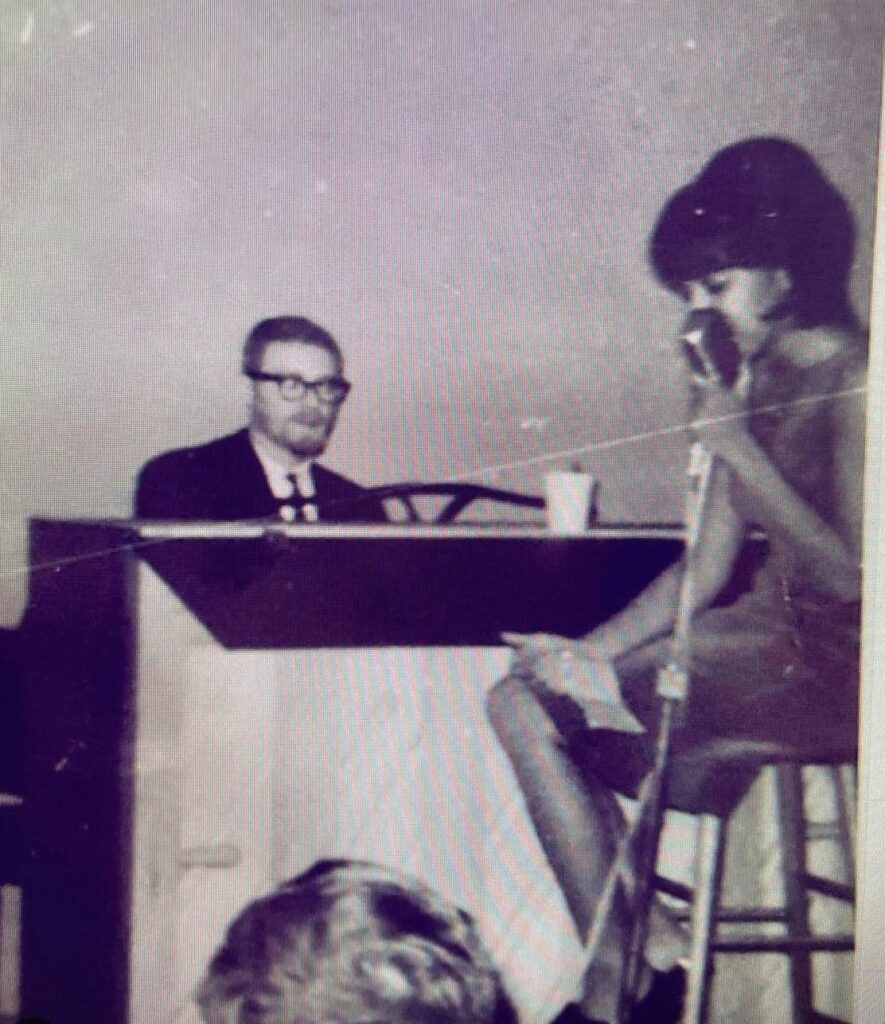
Judi performing at the Yardbird Suite in the late 1950s-early 60s. Image courtesy of Emily Hughes, Judi’s daughter.
In the late 1950s and early 1960s, a young Judi was emerging as a professional jazz singer. She also did morning jingles for hit radio stations and led ensembles in front of packed audiences at the Yardbird Suite which was the place in town to play jazz. The Yardbird Suite was founded by Tommy Banks and Judi’s cousin Ken Chaney in March 1957 in the basement of a store on Whyte Avenue and 104 Street. Sunday night concerts always sold out and, often, the place hosted five shows a week. Judi was the star of Yardbird and several other local bands.
In mid 60s, she moved to Winnipeg to work with the CBC and the rising guitar star Lenny Breau who was later inducted in the Canadian Music Hall of Fame. Judi and Lenny became the talk of the town as they got romantically involved and left for Toronto in 1967. They settled in a small apartment in downtown Toronto with dreams of making big names for themselves in jazz and guitar. While Lenny managed to get work in Toronto’s music scene, especially in Yorkville, Dundas, and projects in the United States – things were tough for Judi. Their daughter Emily was born in Toronto and, as a new mom going through the pain of losing her father Sohan Singh in 1968 and dealing with Lenney’s escalating hard drug use, the talented artist’s career went downhill.
Left: Gatherings at Effie and Sohan Singh’s residence in Edmonton, 1962. Image courtesy of Helen Heslep, Sohan and Effie’s oldest daughter. Right: Judi Singh and Tommy Banks in 1970s. Image courtesy of Emily Hughes, Judi’s daughter.
In an interview with Ron Forbes-Roberts for Lenny’s biography, Judi recalls, “Lenny was using drugs and gone all the time, and I was starving with Emily.” She and Emily eventually returned to Edmonton and Tommy Banks helped her get back into the local music scene. In the summer of 1970, she and Banks recorded A Time for Love which was a huge hit. Today, it is a rare record and a collector’s dream to own one. Jazz collectors are known to pay a few thousand dollars to get their hands on a LM series collections. The duo also recorded a second set of songs called Make Someone Happy in the years that followed.
Judi continued to sing at Edmonton’s Winspear Centre, at Victoria’s Royal Theatre, and in concert halls in New York and Los Angeles. Her last big performance in Edmonton was in the spring of 2007 to celebrate the 50th anniversary of Yardbird Suite.
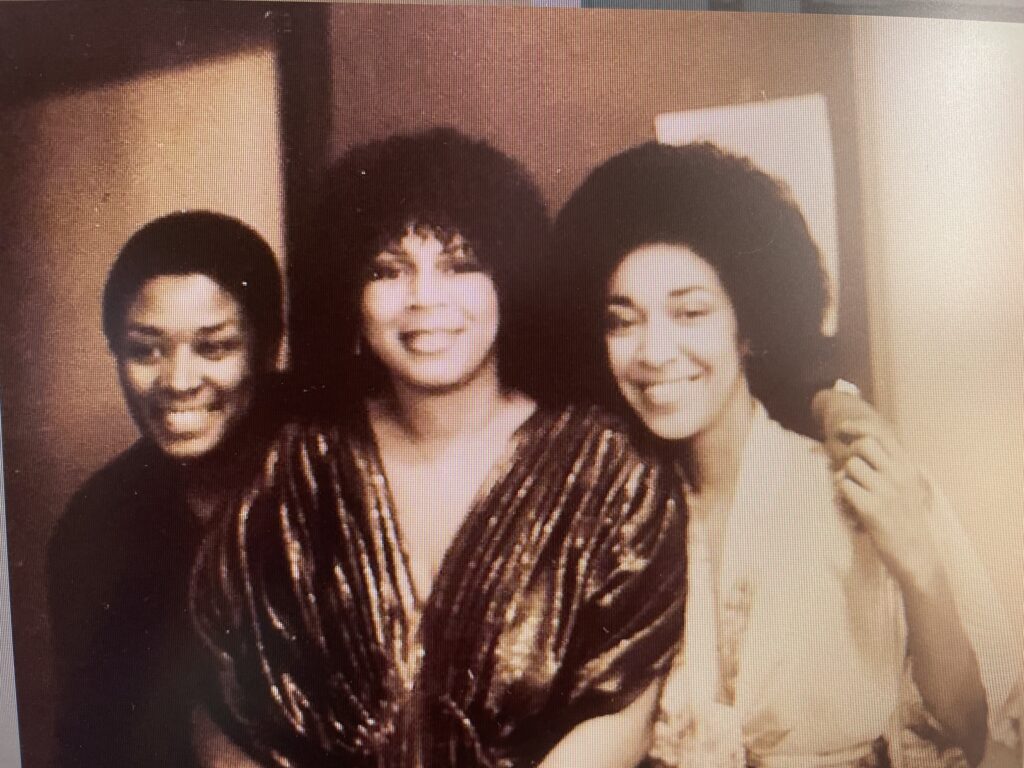
Gail Toulson, Minnie Riperton & Judi Singh backstage at a show in Edmonton. Image courtesy of Emily Hughes, Judi’s daughter.
In her peers’ words listed in an old Yardbird Suite memoir, Judi was “beautiful in both stature and voice, singing professionally and knocking everybody out” in late 1950s Edmonton. She was perhaps the only famous musician of her race and gender in the local music scene between the 1950s and 1970s. From the mega-rare Canadian pop album with Tommy Banks “Stay with Me Forever” to the 1970 CBC LM series “Time for Love,” Judi Singh was a household name in the local music scene. Sadly, she never earned accolades beyond her hometown as did some of her fellow prairie musicians, such as Joni Mitchell. She was a contemporary of Tommy Banks and even though the duo produced several musical pieces together, Banks is a famous Edmonton icon whereas Judi Singh is a forgotten name.
Today, at 75, Judi lives in Victoria. A very private person, she is a “doting nana” to four grandkids. Judi was chronically underappreciated as a songwriter and perhaps Edmonton’s first successful BIPOC musician- the incorrigible daughter of the first Sikh Albertan and a pioneer Black settler. If I had the chance I would like to ask Judi – how was it being the only Black & South Asian artist in 50s Edmonton?
Left: Judi Singh with her daughter Emily Hughes, present day. Image courtesy of Emily Hughes, Judi’s daughter. Right: Judi signs a vinyl of “Time for Love” in 2018. Image courtesy of Emily Hughes, Judi’s daughter.
Poushali Mitra © 2021
References
1. Alberta Sikh History Facebook page archival materials.
2. Provincial Archives of Alberta, Photos and Heritage Marriage License Records.
3. Shiloh Baptist Church Information archives.
5. Canuckistan Music by Michael Panontin.
6. https://www.edmontonmapsheritage.ca/location/sohan-singh-bhullar-park/
7. Photographs source: CBC, Provincial Archives of Alberta, and family photo collections.


